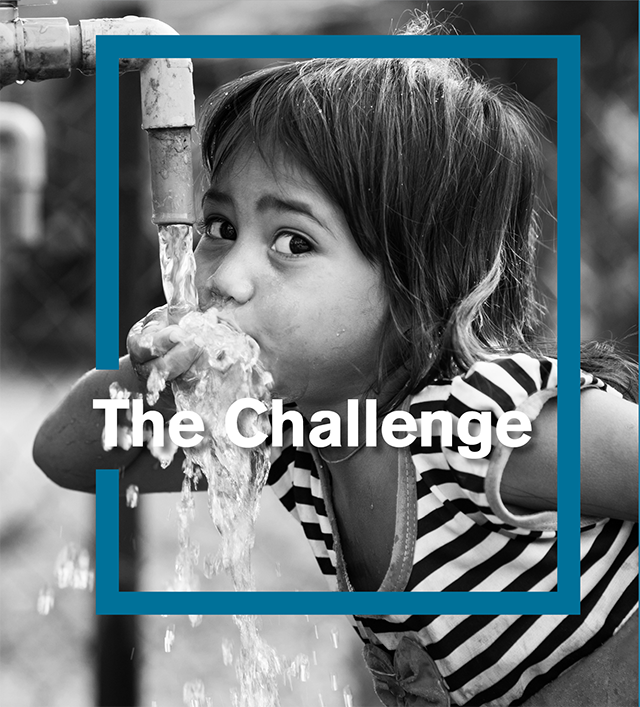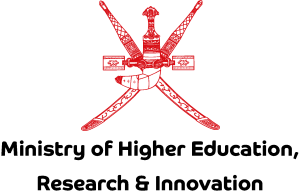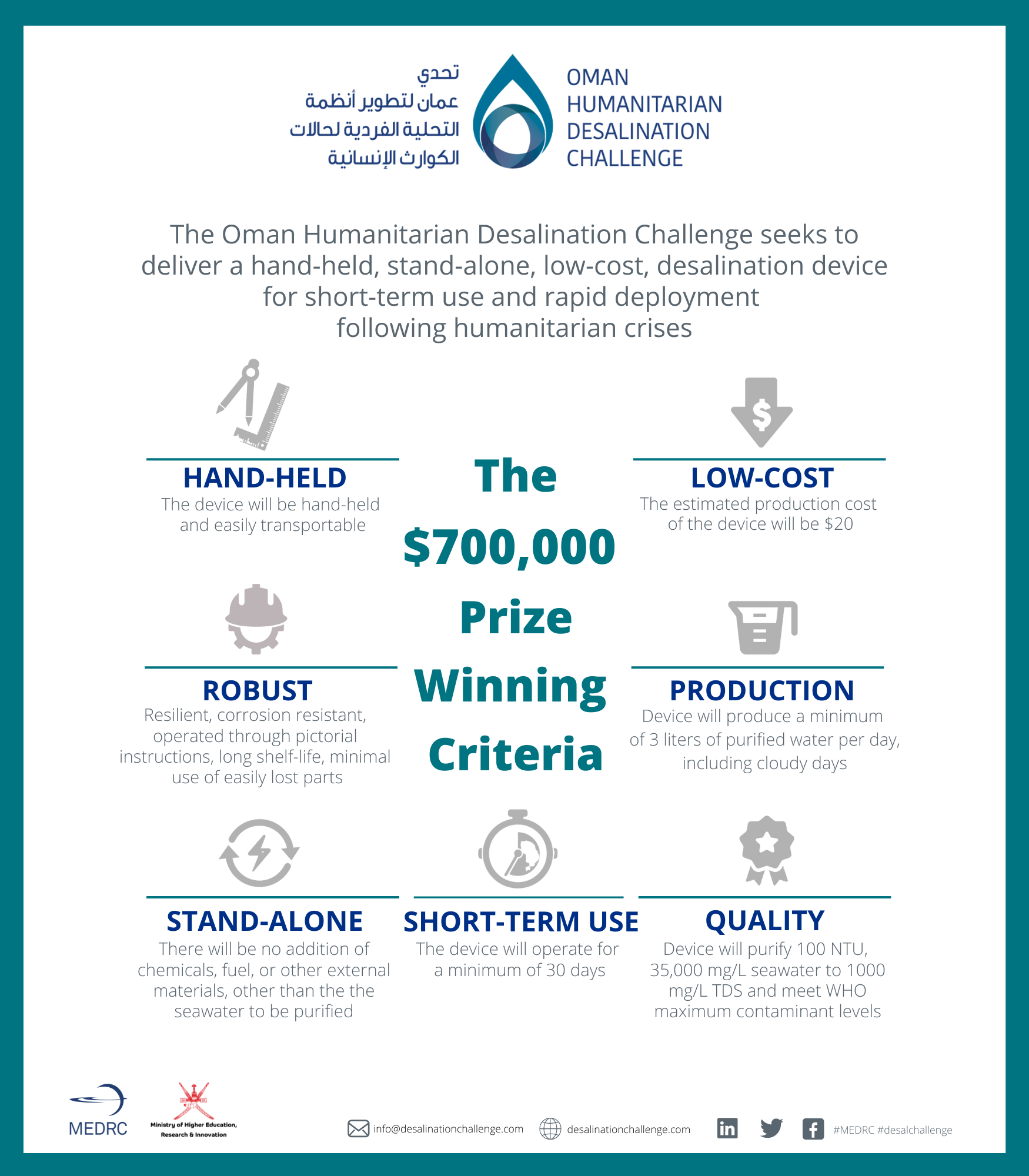
The Oman Humanitarian Desalination Challenge (OHDC) consists of two parts: a Prize Competition and the Pathway Research Grants. The Prize Competition is led by MEDRC supported by the Oman Ministry of Higher Education, Research and Innovation (MoHERI). The Pathway Research Grants are led by MEDRC and supported by the United States Agency for International Development (USAID).
The Prize
The OHDC Prize Competition seeks to create a hand-held, stand-alone, low-cost, desalination device for short-term use and rapid deployment following a humanitarian crises.
Access to clean fresh drinking water following a disaster is critical to health and survival. Current relief response measures often rely on transporting massive quantities of bottled water into the affected population or distributing water purification devices or tablets that don’t have the ability to rid water of salt.
There is an urgent need for an inexpensive hand-held desalination device that can be deployed quickly and affordably to people in need of drinking water in times of crises. No such product exists on the marketplace today.
The OHDC Prize Competition carries a $700,000 prize. Launched March 7, 2018, the OHDC Prize Competition is starting its third competition with no winner from the previous two.
The OHDC Prize Competition is open to any individual, team, or organization from across the world who believes they have a solution capable of meeting this need.
Register for the third OHDC Prize Competition before May 31, 2023.
Queries should be forwarded to info@desalinationchallenge.com
Timeline for Prize Competition
October 5: Written narrative and video submission deadline
October 26: Notify devices accepted for testing
October 29 - November 9: Screening test of devices
December: Official presentation to winner
The Pathway Research Grants
In partnership with the USAID, MEDRC launched a third international call for research proposals at the end of 2021 in a bid to spur innovation in small-scale desalination technologies.
The OHDC Pathway Research Grants look for the development of a small-scale desalination unit (120 liters per day) capable of supporting a family with access to brackish water sources. MEDRC specifically awarded proposals that would allow a grantee to better compete for the OHDC Prize Competition through down-scaling of their device.
The Application for the Pathway Research Grants is currently closed.
Learn more about our research grants here
Queries should be forwarded to research@medrc.org
Exploring The Challenge
Ciarán Ó Cuinn, MEDRC Center Director and Kevin Price, MEDRC Senior Science & Technology Advisor set out the aims and objectives of the Oman Humanitarian Desalination Challenge in this short 2 minute video clip.
'If we can find a way to get drinking water to people in the first hours and days after a humanitarian crises, we will be doing humanity a huge service'
MEDRC Center Director, Ciarán Ó Cuinn

What we're looking for

Low Cost
The estimated production costof the device will be $20.

Robust
The device should be resilient, corrosion resistant, operate through pictorial instructions, have a long shelf-life, and should minimize the use of parts that could be lost.

Short-term use
The device will operate for a minimum of 30 days.

Handheld-size
The device will be hand-held and easily transportable.

Rate of production
Device will produce a minimum of 3 liters of purified water per day, including cloudy days.

Stand-alone
There will be no addition of chemicals, fuel, or other external materials, other than the seawater to be purified.

Quality
Device will purify 100 NTU, 35,000 mg/L seawater to 1000 mg/L TDS and meet WHO maximum contaminant levels.
Challenge Timeline





